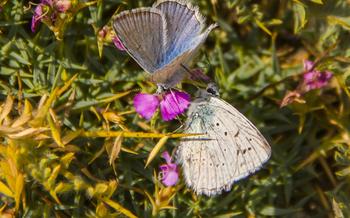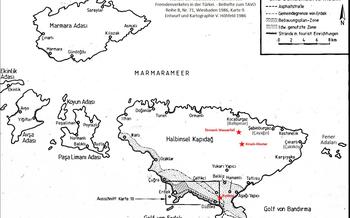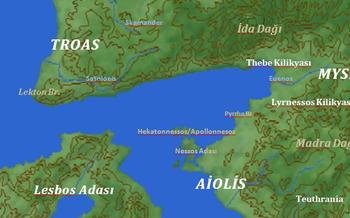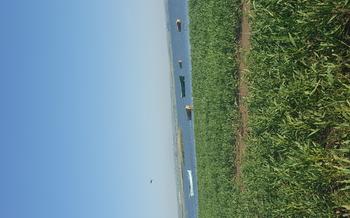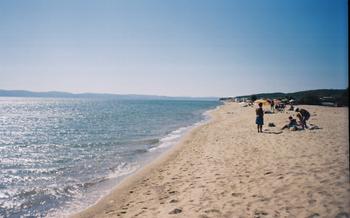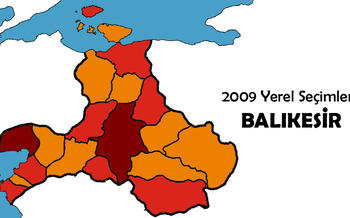
Kuscenneti National Park Visitor Center
- Kuscenneti National Park Visitor Center: A Haven for Birdwatching Enthusiasts
- Getting to Kuscenneti National Park: A Journey into Nature
- Park Entrance Fees and Hours of Operation: Planning Your Visit
- Visitor Center Facilities: Enhancing Your Park Experience
- Guided Tours and Birdwatching Hides: Exploring the Park's Secrets
- Top Bird Species to Spot: A Photographer's Paradise
- Birdwatching Ethics and Conservation: A Shared Responsibility
- Accommodation Options Near the Park: A Comfortable Stay
- Local Cuisine and Delicacies: A Taste of Balıkesir
- Other Attractions in the Area: Exploring the Region
- Safety Precautions and Tips: Ensuring a Smooth and Enjoyable Visit
- Photography Opportunities: Capturing the Beauty of Nature
- Volunteering and Citizen Science: Contributing to Conservation
- Insider Tip: Birdwatching Etiquette and Respecting Wildlife
Kuscenneti National Park Visitor Center: A Haven for Birdwatching Enthusiasts
Established in 1959, Kuscenneti National Park stands as a testament to Turkey's commitment to preserving its natural heritage. Covering an area of over 21,000 hectares, the park is renowned for its exceptional biodiversity, particularly its rich birdlife. Kuscenneti, meaning "Bird Paradise" in Turkish, lives up to its name by providing a sanctuary for over 250 species of birds, including many rare and endangered species.
The park's unique ecosystem, characterized by a mosaic of wetlands, forests, and grasslands, creates an ideal habitat for various bird species. The shallow Lake Kuscenneti, the park's centerpiece, attracts numerous waterbirds, including flamingos, pelicans, and herons. The surrounding reed beds and marshes provide nesting and feeding grounds for a variety of songbirds, while the upland areas host species like eagles, hawks, and owls.
Kuscenneti National Park has gained national and international recognition for its conservation efforts and birdwatching opportunities. It has been designated as a Ramsar Site, a wetland of international importance, and is part of the Important Bird Area (IBA) network. The park's visitor center plays a crucial role in educating and engaging visitors, promoting responsible birdwatching practices, and facilitating research and conservation initiatives.
Getting to Kuscenneti National Park: A Journey into Nature
Reaching Kuscenneti National Park is a journey that immerses you in the beauty of the natural world. To arrive by car, follow the D550 highway from Balıkesir city, and after approximately 30 kilometers, turn onto the park's access road. The drive takes about 45 minutes from Balıkesir and offers scenic views of the surrounding countryside.
For those without a vehicle, public transportation is a viable option. Regular buses depart from Balıkesir bus station to nearby Gönen town. From Gönen, you can take a taxi or arrange a private transfer to the park entrance. The bus journey from Balıkesir takes around 1 hour, and the subsequent taxi ride to the park takes approximately 15 minutes.
Organized tours are another convenient way to visit Kuscenneti National Park. Several tour operators in Balıkesir offer day trips or multi-day excursions that include transportation, guided tours, and other activities. These tours are ideal for those who prefer a hassle-free and informative experience.
Regardless of your chosen mode of transportation, remember that the journey to Kuscenneti National Park is part of the adventure. Embrace the opportunity to soak in the natural beauty of the region and the anticipation of exploring one of Turkey's premier birdwatching destinations.
Park Entrance Fees and Hours of Operation: Planning Your Visit
Entrance Fees: Admission to Kuscenneti National Park is subject to an entrance fee, which varies depending on the visitor category. Adults are typically charged a standard fee, while children and students may be eligible for discounted rates. It's advisable to check the park's official website or inquire at the visitor center for the most up-to-date fee information.
Operating Hours: The park follows specific operating hours to ensure the well-being of its wildlife and the safety of visitors. These hours may vary seasonally, so it's essential to plan your visit accordingly. During the summer months, the park is generally open from early morning until sunset, allowing ample time for birdwatching and exploration. However, during the winter season, the hours may be shorter due to reduced daylight.
Best Time to Visit: The optimal time to visit Kuscenneti National Park depends on your specific interests and preferences. For birdwatching enthusiasts, the spring and fall migration periods offer an exceptional opportunity to witness a diverse array of bird species. During these seasons, the park is alive with the activity of migratory birds, making it an ideal time for observation and photography.
Advance Ticketing: To avoid queues and ensure a smooth entry, it's highly recommended to purchase your tickets online or in advance. Several online platforms and authorized ticket vendors offer the convenience of pre-booking your visit. By doing so, you can secure your spot and bypass any potential lines at the park entrance.
Visitor Center Facilities: Enhancing Your Park Experience
The Kuscenneti National Park Visitor Center is a modern and well-equipped facility designed to enhance your park experience. As you step inside, you'll find a welcoming information desk staffed by knowledgeable park rangers ready to answer your questions and provide guidance. Interactive exhibits and educational displays bring the park's unique ecosystem to life, showcasing the diverse bird species that call it home.
For those seeking a deeper understanding of the park's avian wonders, the visitor center offers a variety of educational programs and workshops. These programs, led by experienced naturalists, provide insights into bird behavior, identification techniques, and conservation efforts. Whether you're a seasoned birdwatcher or a curious beginner, these programs offer a wealth of knowledge to enrich your visit.
The visitor center also features a well-stocked gift shop where you can purchase souvenirs, bird-related merchandise, and field guides to enhance your birdwatching experience. From colorful t-shirts and caps to bird feeders and binoculars, the gift shop offers a range of items to cater to every bird enthusiast's needs.
To complete your visit, the visitor center houses a cafeteria or restaurant where you can grab a bite to eat or enjoy a refreshing drink. Whether you prefer a quick snack or a leisurely meal, the cafeteria offers a variety of options to satisfy your hunger and keep you energized for your birdwatching adventures.
Guided Tours and Birdwatching Hides: Exploring the Park's Secrets
Joining a guided tour led by experienced naturalists is an excellent way to enhance your birdwatching experience in Kuscenneti National Park. These knowledgeable guides will lead you to the best spots for birdwatching and share their insights on the park's diverse birdlife. They can help you identify different bird species, understand their behaviors, and learn about their conservation status.
The park also offers several strategically located birdwatching hides, providing an immersive and up-close encounter with the birds. These hides are camouflaged shelters that allow you to observe birds without disturbing them. Prior booking or reservations are necessary to secure a spot in a hide, ensuring a peaceful and exclusive birdwatching experience.
Whether you choose to explore the park independently or with a guide, remember to bring your binoculars, cameras, and appropriate clothing for birdwatching. A pair of comfortable shoes is essential for navigating the park's trails, and a telephoto lens will help you capture stunning shots of the birds.
Top Bird Species to Spot: A Photographer's Paradise
Kuscenneti National Park is a haven for bird enthusiasts, with over 250 recorded bird species, including many rare and endangered species. Some of the most commonly sighted birds include:
-
Dalmatian Pelican: Known for its large size and distinctive pink bill, the Dalmatian Pelican is a majestic bird often seen soaring over the park's wetlands.
-
Great White Pelican: Similar in appearance to the Dalmatian Pelican, the Great White Pelican is slightly larger and has a white plumage.
-
Pygmy Cormorant: A small, dark-feathered cormorant with a long, slender bill. It is often seen perched on branches or rocks, drying its wings after fishing.
-
Eurasian Spoonbill: A striking bird with a long, spoon-shaped bill and white plumage. It is often seen wading in shallow waters, searching for food.
-
Glossy Ibis: A medium-sized ibis with a long, curved bill and iridescent black plumage. It is often seen foraging in marshy areas.
-
Little Egret: A small, white heron with a long, slender bill and black legs. It is often seen hunting for fish in shallow waters.
-
Great Egret: Similar to the Little Egret but larger in size, the Great Egret has a distinctive white plumage and a long, yellow bill.
-
Purple Heron: A medium-sized heron with a long, slender bill and purple-gray plumage. It is often seen perched on trees or rocks, waiting for prey.
-
Squacco Heron: A small, stocky heron with a short, thick bill and brown-buff plumage. It is often seen in reed beds and marshes.
-
Cattle Egret: A small, white heron with a yellow bill and black legs. It is often seen following cattle or other large animals, preying on insects disturbed by their movements.
These are just a few of the many bird species that can be spotted in Kuscenneti National Park. With its diverse habitats and abundant birdlife, the park is a paradise for birdwatchers and nature lovers alike.
Seasonal Variations and Migration Patterns: The bird species found in Kuscenneti National Park vary throughout the year due to seasonal migrations. During the spring and fall, the park serves as a stopover point for many migratory birds, including storks, cranes, and raptors. The best time to spot these migratory birds is from March to May and from September to November.
Bird Photography Tips: - Use a telephoto lens to capture close-up shots of birds without disturbing them. - Experiment with different shutter speeds to capture birds in flight or to create a sense of motion. - Pay attention to the background and lighting conditions to create visually appealing compositions. - Be patient and persistent. Bird photography requires time and effort, but the rewards can be truly spectacular.
Birdwatching Ethics and Conservation: A Shared Responsibility
Kuscenneti National Park is not just a haven for birdwatchers; it's also a sanctuary for the birds themselves. As visitors, we have a responsibility to minimize our impact on the park's delicate ecosystem and its inhabitants.
Responsible Birdwatching Practices
-
Leave No Trace: Adhere to the "leave no trace" principle by not littering, disturbing the natural environment, or removing any plants or animals from the park.
-
Stay on Designated Trails: Remain on designated trails to avoid disturbing nesting birds or trampling sensitive vegetation.
-
Minimize Disturbance: Maintain a respectful distance from birds and their nests. Avoid loud noises, sudden movements, or using flash photography.
Conservation Efforts
The park's staff works tirelessly to protect and conserve the park's ecosystem and its birdlife. Visitors can contribute to these efforts by:
-
Supporting Conservation Initiatives: Consider donating to the park's conservation programs or volunteering your time.
-
Educating Others: Share your knowledge and experiences with others to raise awareness about the importance of bird conservation.
-
Using Eco-friendly Products: Opt for eco-friendly products, such as biodegradable wipes and insect repellent, to minimize your impact on the environment.
Together, we can ensure that Kuscenneti National Park remains a haven for birds and a place where future generations can enjoy the wonders of nature.
Accommodation Options Near the Park: A Comfortable Stay
Kuscenneti National Park's strategic location makes it easily accessible from various accommodation options in the surrounding area.
-
Guesthouses and hotels in nearby towns and villages offer a range of options for travelers seeking comfort and convenience. These accommodations provide amenities such as comfortable rooms, private bathrooms, and often, traditional Turkish hospitality.
-
For a more rustic experience, several campsites are situated within a short distance of the park, allowing visitors to immerse themselves in nature. These campsites offer basic facilities like tent pitches, restrooms, and sometimes even cooking areas.
-
To ensure a hassle-free stay, it's advisable to book your accommodation in advance, especially during peak tourist seasons or holidays. Online booking platforms or contacting the local tourism office can assist in finding suitable options.
Local Cuisine and Delicacies: A Taste of Balıkesir
Balıkesir, the province where Kuscenneti National Park is located, is renowned for its rich culinary heritage. Visitors to the park can savor the flavors of traditional Turkish cuisine with a unique regional twist. One must-try dish is "Balıkesir kaymak," a thick and creamy clotted cream that is often served as a breakfast delicacy. The region's "Balıkesir köftesi," or meatballs, are another local specialty, known for their juicy and flavorful taste.
For a memorable dining experience, consider visiting one of the local restaurants or cafes near the park that specialize in traditional Balıkesir cuisine. These establishments often use fresh, seasonal ingredients and take pride in preserving the culinary traditions of the region. Be sure to ask for recommendations from the locals or your accommodation provider to find the best spots to savor the authentic flavors of Balıkesir.
Other Attractions in the Area: Exploring the Region
Kuscenneti National Park is not the only gem in the Balıkesir region. Visitors can enrich their trip by exploring nearby attractions that offer a glimpse into the region's rich history, culture, and natural beauty.
Balıkesir Archaeological Museum: Located in the city of Balıkesir, this museum houses a vast collection of artifacts from the region's ancient past. Visitors can admire exhibits showcasing the region's pre-historic, Greek, Roman, and Byzantine heritage.
Gönen Hot Springs: Known for its therapeutic waters, Gönen Hot Springs is a popular destination for relaxation and rejuvenation. Visitors can soak in the natural hot pools and enjoy the tranquil surroundings.
Mount Ida: For those seeking a scenic adventure, Mount Ida (Kazdağları) offers breathtaking views, lush forests, and charming villages. Visitors can hike to the summit, explore ancient ruins, or simply enjoy the serenity of the mountain landscapes.
Edremit Gulf: Just a short drive from Kuscenneti National Park, the Edremit Gulf boasts pristine beaches, turquoise waters, and charming coastal towns. Visitors can swim, sunbathe, or embark on a boat tour to explore the picturesque coves and islands.
Suggested Itinerary: To make the most of your visit, consider creating a customized itinerary that combines your interests and time constraints. For example, you could spend a day birdwatching at Kuscenneti National Park, followed by a visit to the Balıkesir Archaeological Museum. On another day, you could explore the Gönen Hot Springs and take a scenic drive through Mount Ida.
With its diverse attractions and natural wonders, the Balıkesir region offers a rich and rewarding experience for every traveler.
Safety Precautions and Tips: Ensuring a Smooth and Enjoyable Visit
When exploring the natural wonders of Kuscenneti National Park, it is crucial to prioritize safety and follow park regulations for a smooth and enjoyable experience. Visitors should come prepared with comfortable walking shoes and appropriate clothing suitable for uneven terrain. Staying hydrated is essential, especially during the warm summer months, so carry a water bottle or utilize the park's drinking fountains. Respecting park regulations and following safety guidelines, such as staying on designated trails and adhering to designated birdwatching hides, is mandatory. In case of emergencies or inquiries, a contact number or emergency information is provided at the visitor center or on the park's official website. Remember, responsible behavior not only ensures a safe visit but also contributes to the preservation of the park's delicate ecosystem.
Photography Opportunities: Capturing the Beauty of Nature
Kuscenneti National Park is a photographer's paradise, offering endless opportunities to capture the beauty of nature in all its glory. The park's stunning landscapes, diverse birdlife, and serene atmosphere provide a perfect backdrop for photography enthusiasts of all levels.
When visiting the park, it is recommended to bring a camera with a zoom lens to capture detailed shots of the birds and their surroundings. Exploring the park at different times of day can also yield different and interesting lighting conditions, allowing photographers to experiment with composition and lighting.
For those interested in capturing the park's vast landscapes, a wide-angle lens can be useful for capturing panoramic shots of the wetlands, forests, and distant hills. Tripod use is also recommended for stability, especially when shooting in low-light conditions or using long exposure times.
Post-processing techniques can further enhance the beauty of the captured images. Basic adjustments such as cropping, color correction, and exposure adjustments can improve the overall look and feel of the photographs. Additionally, photographers can experiment with more advanced techniques such as HDR (High Dynamic Range) photography to capture the full range of tones and colors in the scene.
Remember to follow ethical guidelines and respect wildlife while pursuing photography in the park. Avoid disturbing the birds, their nests, or their natural habitats. Maintaining a respectful distance and using appropriate equipment and techniques will ensure that you capture stunning images without compromising the well-being of the wildlife.
Volunteering and Citizen Science: Contributing to Conservation
Kuscenneti National Park offers visitors the unique opportunity to contribute to conservation efforts through volunteering or participating in citizen science projects. Volunteers play a vital role in assisting park staff with bird monitoring, data collection, and habitat restoration activities. By joining a volunteer program, visitors can gain hands-on experience in ornithology, ecology, and conservation practices.
Citizen science projects allow visitors to contribute to scientific research by collecting data on bird populations, migration patterns, and habitat usage. This data is invaluable for park management and conservation planning. Volunteers can participate in bird counts, nest monitoring, and other research projects that help scientists better understand the ecology of the park and the threats facing its birdlife.
Volunteering or participating in citizen science projects at Kuscenneti National Park is a rewarding experience that allows visitors to make a meaningful contribution to conservation while learning more about the park's unique ecosystem. To get involved, visitors can contact the park's staff or check the park's website for information on upcoming volunteer opportunities and citizen science projects.
Insider Tip: Birdwatching Etiquette and Respecting Wildlife
Birdwatching is an immersive and rewarding experience, but it also carries the responsibility of respecting the wildlife and their natural habitat. As visitors to Kuscenneti National Park, it's crucial to maintain a respectful distance from birds and their nests to avoid causing any disturbance. Sudden movements or loud noises can startle the birds, affecting their behavior and potentially leading to nest abandonment.
It's important to remember that these birds are wild creatures with their own unique behaviors and needs. Visitors should take the time to learn about the specific species they encounter, understanding their feeding habits, nesting preferences, and any potential vulnerabilities. By doing so, birdwatchers can minimize their impact on the birds and contribute to their conservation.
Respecting wildlife is not just a matter of following park regulations but also a way of preserving the delicate ecosystem of Kuscenneti National Park. By adopting a responsible and mindful approach, visitors can ensure that future generations can continue to enjoy the beauty and diversity of this natural treasure.

